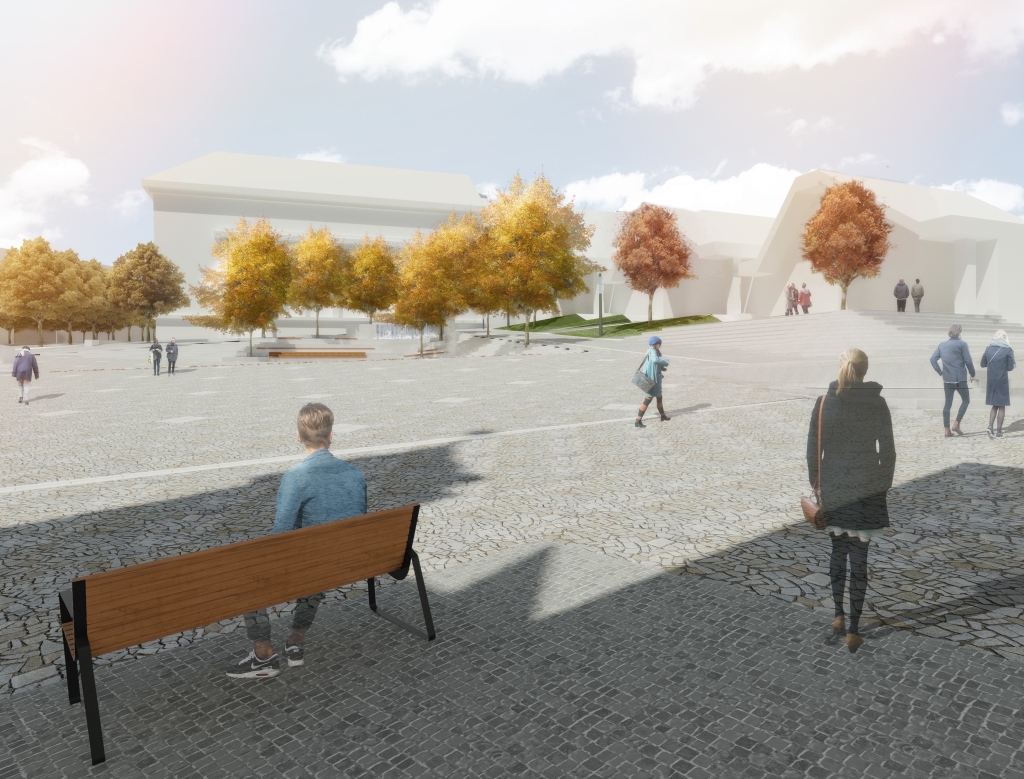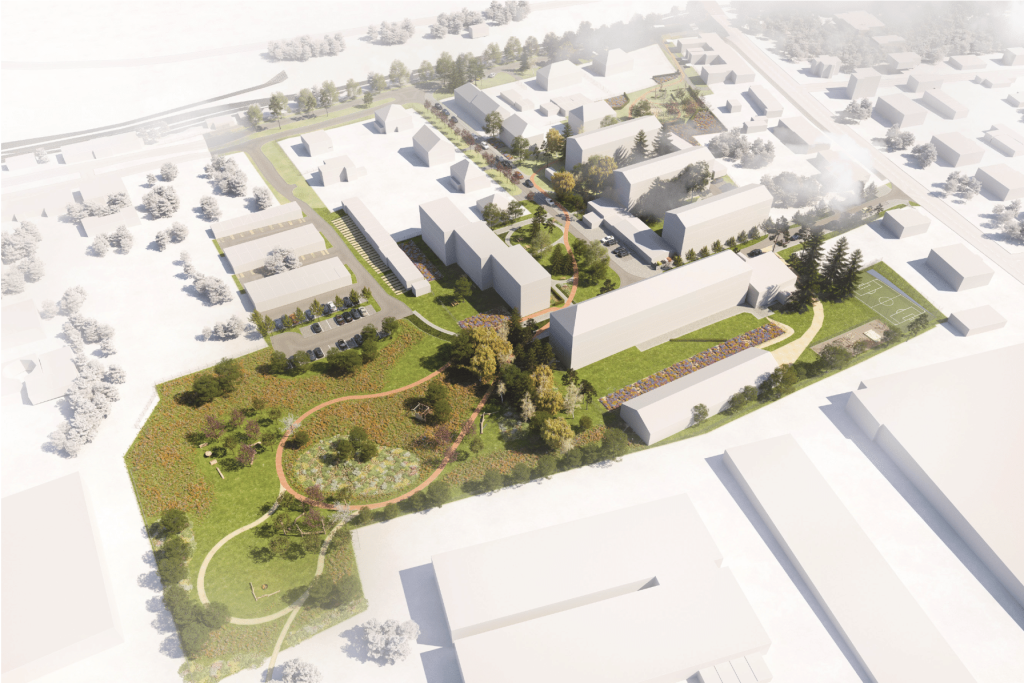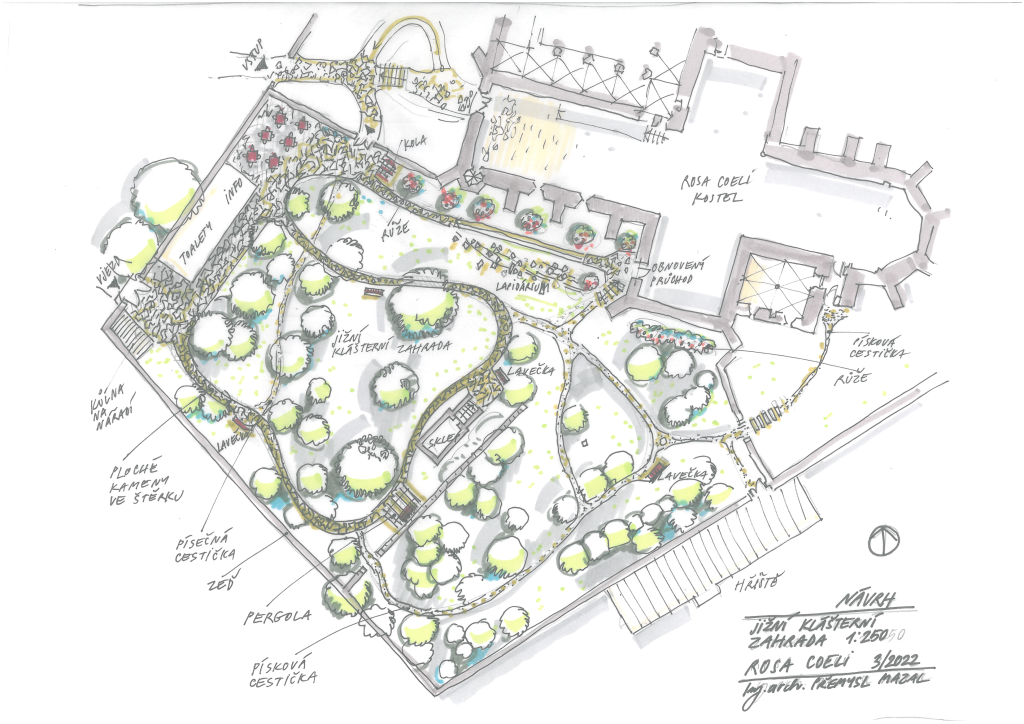Revitalising urban spaces is not just an aesthetic improvement. It is a necessary response to the new challenges we face in the context of climate change and the development of our municipalities. Urban centres are the arteries of everyday life, where citizens come together on a daily basis. However, these spaces are often neglected and their degradation has a detrimental effect on our environment. It is therefore essential to invest in their renewal through revitalisation aimed at developing blue-green infrastructure. The green component involves greening the public space and the blue component involves providing water areas, features or the acquisition of new surfaces that allow better absorption of rainwater. All this with the aim of making adaptation to climate change and and urban heat islands more effective. High-quality blue-green areas not only contribute to reducing temperatures in urban centres, but also improve air quality and increase biodiversity.
Urban revitalisation is not just about isolated projects, but about integrated and synergistic approaches. It combines ecological, social and economic aspects that enhance the aesthetic value of a given space. Six towns were recommended for support by the Steering Committee of the Brno Metropolitan Area with their plans for the revitalisation of urban districts. Tišnov and Brno-Bosonohy district will completely renovate its central square. Slavkov u Brna, Kuřim, Pohořelice and Bučovice will revitalise the area near the town centre. Another project, whose applicant is not the town but the Bishopric of Brno, follows the revitalisation of the Rosa Coeli monastery in Dolní Kounice – the southern garden will be made accessible. We will present all the projects in turn.
The historical centre of Tišnov is located on a hill and the main square of Tišnov – Square of Peace – is equally sloping. Its slope and clay subsoil makes it impossible to collect and use rainwater and makes access difficult for wheelchair users. The square revitalisation project aims to remedy this situation. The repairs will create new paving and drainage, pave the area to retain as much water as possible and plant mature trees. The City of Tišnov also wants to focus on mitigating the effects of climate change. Water features will therefore be added to the square. One of them is a cascading staircase, which will also serve as an amphitheatre for Tišnov residents. Visitors will also have access to new furniture and drinking fountains. The square will thus become an attractive public space for all generations.

The Liberation Square in Kuřim has not changed much since its creation in the 1950s. Now it is in a poor technical condition and does not meet the needs of the city and its inhabitants. The revitalisation of the square aims to turn it into the centre of the cultural, social and commercial life of the city. It will include more greenery, including new trees and shrubs, new furniture and water features. The transformation of the square should allow for various city events, including markets and concerts, especially in the area around the community centre. The proposal also includes moving the roadway to free up space. In addition, a new car park and the relocation of the Liberator monument are planned, with an emphasis on preserving the commemorative character.
The area of Stará Obec Street was once inhabited by the Jewish community. The aim of its revitalization is to commemorate the local cultural heritage and the history of the vanished buildings. The project will revitalize the Stará Obec area for the public. Paths will be landscaped, fountains or benches will be created and existing greenery will be restored as well as new trees, small shrubs and flowers will be planted. A commemorative space will also be created on the site of the demolished synagogue, including educational panels with historical facts and points of interest. The whole project is inspired by the biblical story – the miracle of Moses, according to which this Old Testament prophet led the Jewish people through the stormy sea. The architectural design also corresponds to this – the central road that connects the city centre with the primary school and the sports hall is intended to represent the route between the mass of water that Moses had parted in order to lead the Israelites out of Egypt. In the “sea” we will find water features that will gush water over the summer. In addition to its aesthetic function, the project aims to improve the local microclimate with a rainwater retention system. There are new seepage facilities, retention and storage tanks and an irrigation system.
The City of Slavkov u Brna has prepared an integrated solution to ensure the most efficient storage and use of rainwater in the city. The solution focuses, among other things, on the regeneration of the Nádražní housing estate, which can be characterised by its small size, which lacks a unifying urban concept. The technical condition of most of the pavements and roads is particularly problematic, as is the lack of trees and their inappropriate composition. The estate is surrounded by industrial and agricultural areas and is slightly isolated from other developments. Therefore, the City Hall has initiated the need to regenerate the estate to create high quality green spaces and public areas for the residents who live there. The revitalisation proposes to calm the area, strengthen parking spaces, and add relaxation and green areas. The project also provides for new lighting, play elements and modern furnishings. The blue-green infrastructure is intended to protect against the negative impacts of climate change and improve the environment. The whole project is also unique in that it was developed on the basis of community planning in cooperation with the residents of the estate who were involved in the project preparation.

The South Garden revitalisation project is part of the Rosa Coeli Integrated Solution. The project will open the garden to the monastery, which is currently closed. New trees and shrubs will be planted and high quality furnishings will be installed to make the garden a place for relaxation and recreation. The Rosa Coeli integrated solution will also include the revitalisation of the historical parts of the monument, the creation of a new visitor exhibition, the construction of an information centre and the connection to Ivančice via a cycle path. More about the whole solution can be found here.

Kuřim is planning to transform two locations – the area around the railway station and the Na Královkách housing estate. The town of Kuřim wants to promote the creation of green spaces that will cool the town, make public spaces more pleasant, and offer residents places to relax and entertainment. The projects, worth almost CZK 60 million, include new parks, playgrounds, street furniture, and elements for better rainwater management. In addition to new apartments and houses, the site of the former arts and crafts factory in Bučovice will also feature public spaces with trees, greenery, and elements for rainwater retention. Read about the comprehensive approach to supporting this development site here.
The last project presented is the renovation of the public space on Bosonožské Square in the Brno-Bosonohy district. Its main goal is to improve the functionality of the space, which currently does not sufficiently serve the needs of local residents, and to make it more attractive. The paved areas will be reconstructed, a promenade sidewalk will be built, and modern street furniture will be installed. The modifications also include the installation of two water features, a children’s playground, and a relaxation zone. Great emphasis is placed on greenery – not only will the existing trees, such as the linden tree avenue, be preserved, but new linden trees will also be planted along with a hedge. There will also be ecological solutions, such as water-absorbing surfaces and the use of rainwater for irrigation. The plan will connect the individual parts of the square and create a multifunctional space that will serve not only for everyday relaxation, but also for community and cultural activities.
All revitalisation projects will cost CZK 502 million in total, of which the subsidy from the ITI tool amounts to CZK 192 million. The projects are part of several integrated environmental solutions, the primary objective of which is to mitigate the effects of climate change and improve the living conditions of the inhabitants of the metropolitan area.
Register your e-mail address to receive regular updates from the Brno Metropolitan Area.